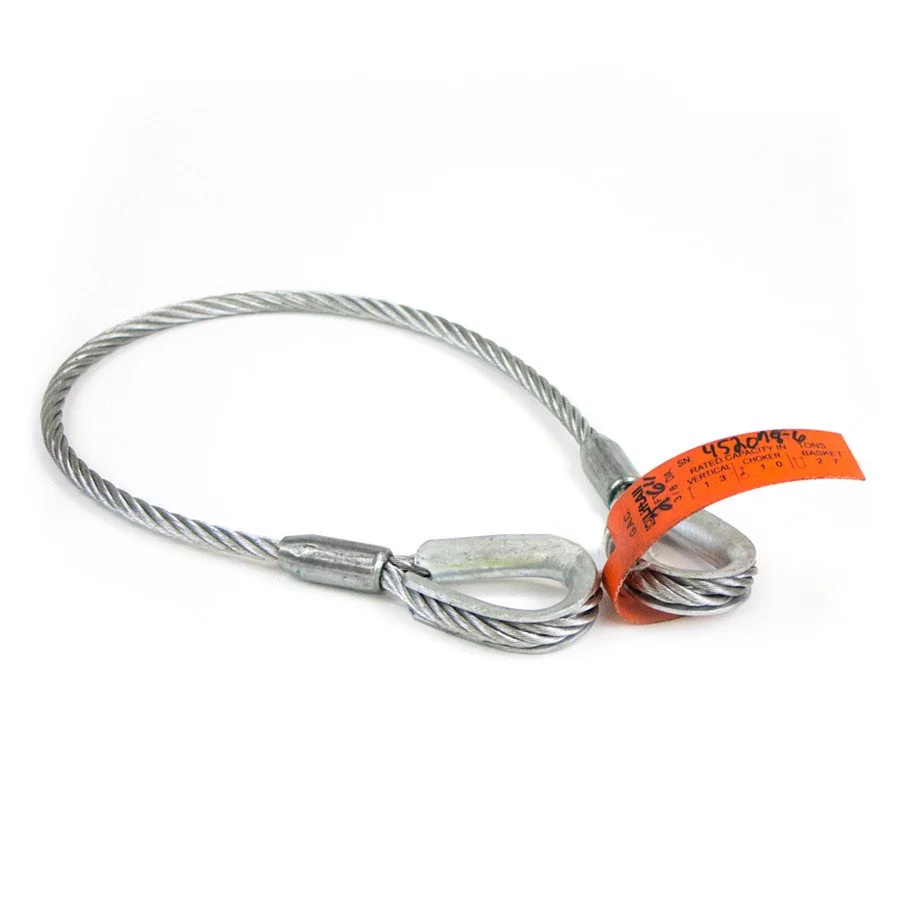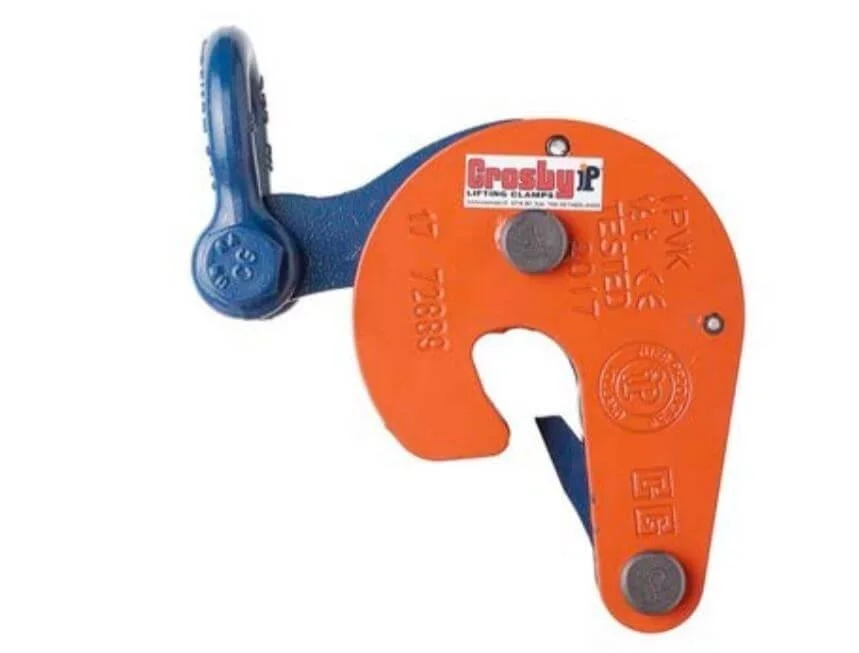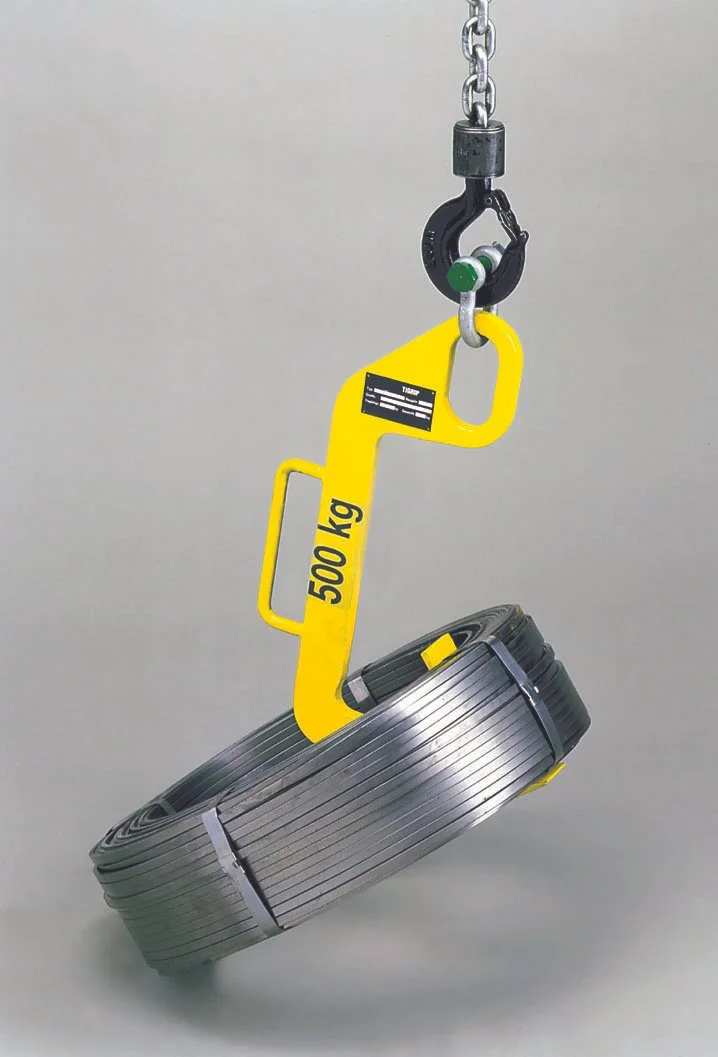FEATURED BRANDS
Hooks
In order to choose the correct hook to pair with your sling, you must consider the total weight of the load, the type of material being lifted, the connection and the type of sling being used.
SLING HOOKS
Sling Hooks are specialized hooks designed for attaching and securing slings, such as wire rope slings, chain slings, synthetic web slings, or round slings, to loads or lifting points. These hooks play a critical role in the rigging and lifting process by providing a secure connection between the sling and the load being lifted. They are manufactured with specific load capacities, so it's crucial to choose the appropriate hook with the correct capacity to match the load being lifted. Sling hooks are typically made from high-strength alloy steel to provide durability and reliability.
FOUNDRY HOOKS
Foundry Hooks are designed for use in foundry and metallurgical applications, where extreme heat, heavy loads, and harsh environments are common, being able to withstand heat of up to 1,800 degrees Fahrenheit. They are typically used with Chain Slings and without a latch for safety considerations. Foundry Hooks are primarily used in applications where tip loading is necessary. Due to being used in extreme conditions, it is crucial that your Foundry Hook is inspected regularly for signs of wear and tear. In addition to standard foundry hooks, there are specialized variations designed for specific tasks, such as coil hooks for handling coils of metal, ladle hooks for lifting and pouring molten metal, and ingot hooks for manipulating metal ingots.
EYE HOOKS
An Eye Hook offers a permanent connection to the sling alongside more flexibility in terms of movement. They are typically constructed from high-strength alloy steel and designed with an eye-shaped opening at the top. This eye allows for easy attachment to slings, cables, chains, or other rigging components, serving as a secure anchor point for lifting and hoisting operations. There are different types of eye hooks, including swivel eye hooks, fixed eye hooks, and specialty eye hooks designed for specific lifting tasks or load types.
CLEVIS HOOKS
Clevis Hooks are designed with a clevis, or "U"-shaped, connection point at the top. This clevis allows for the attachment of rigging components, such as shackles, to secure loads during lifting and hoisting operations. Clevis Hooks can pivot side to side for positioning when connecting to a load. They offer versatility and can be used with various types of rigging components, including wire rope slings, chain slings, synthetic web slings, and round slings. They can also be used in different rigging configurations to accommodate specific load sizes and shapes.
SWIVEL HOOKS
Swivel Hooks are designed with a swivelling or rotating feature at the attachment point. This swivelling capability allows the hook to rotate freely in multiple directions, helping to prevent twists or tangles in the rigging during lifting and hoisting operations.
TYPES OF SWIVEL HOOKS
Double Swivel Hooks: These Swivel Hooks possess two swivelling points and are often used to prevent load rotation.
Positioning Swivel Hooks: This type of hook swivels to allow for proper alignment to the hook during connection. It is not designed to rotate and is only used to position the hook onto the pick point.
True Swivel Hook with Bearing: This Swivel Hook features a bearing inside that allows the hook to rotate freely. This prevents twisting the rigging.
SLINGS
Slings are specialized lifting devices designed to be attached to a crane or hoist to lift and transport heavy loads. They feature various configurations, such as loops, straps, and other attachment points, that are secured directly to the load being lifted.
WIRE ROPE SLINGS
Wire rope slings are constructed from high-strength steel wire rope cables. These cables consist of individual wire strands that are twisted or braided together to form a strong and flexible lifting sling. There are several types of wire rope slings, including single-leg slings, multiple-leg slings, and bridle slings. The configuration of the sling depends on the specific lifting requirements and load characteristics. Wire Rope Slings are a perfect choice for your heavier duty lifting tasks as they are highly durable and resistant to abrasion, corrosion, and extreme temperatures. The initial cost is also less than a typical chain sling with a lighter weight.
CHAIN SLINGS
Similar to Wire Rope Slings, Chain Slings are highly resistant to abrasion and extreme temperatures, making them suitable for lifting materials such as steel beams, machinery, heavy equipment, and other bulky loads. They consist of lengths of alloy steel chain, typically made from high-strength materials to provide durability and load-bearing capacity. Chain Slings are also equipped with specialized end fittings, such as hooks, master links, clevis grab hooks, or other attachments to provide secure connection points for hooks, shackles or other crane attachments. They are perfect for carrying irregularly shaped objects as they are flexible, adapting to the shape of the load. Chain Slings are also unaffected by dirt, oil or gas and are easy to inspect.
ROUND SLINGS
Round Slings are a type of synthetic web sling that is particularly good at lifting objects with irregular shapes or fragile surfaces. They are made from a continuous loop of high-strength synthetic webbing material, often nylon or polyester. The webbing is encased in a protective outer cover that provides additional strength and durability, with the circular shape allowing for an even distribution of the loads weight. Round Slings can be used with different rigging configurations, offering flexibility in load handling. They can be used in single-leg, double-leg, or basket configurations to meet specific lifting needs.
CLAMPS
Below-the-hook clamps are devices used in material handling to securely grip and lift various types of loads. There are several types of below-the-hook clamps, each designed for specific applications and load types.
PLATE CLAMPS
These clamps are designed to lift and transport steel plates and sheets. They come in vertical and horizontal styles, with options for different plate thicknesses and capacities. These clamps are commonly used in manufacturing, construction, and industrial settings where steel plates need to be moved, positioned, or loaded onto machinery or structures. Plate clamps may have padding or rubberized surfaces on their gripping jaws to prevent damage to the plate's surface during lifting. Some plate clamps are designed with swivel eyes or hooks, allowing for easy attachment to slings, hoists, or lifting chains.
GIRDER CLAMPS
Girder clamps are specialized lifting attachments designed to securely attach to beams, girders, or structural steel members for the purpose of lifting and positioning them. These clamps are commonly used in construction, steel fabrication, and industrial settings where steel beams or girders need to be handled. Girder clamps are versatile, accommodating a range of beam sizes. They are designed with adjustable jaws or gripping mechanisms that can be tightened around the beam or girder to provide a secure attachment.
DRUM CLAMPS
Also known as drum lifters or drum tongs, are a type of below-the-hook lifting attachment designed for securely gripping and lifting cylindrical drums, barrels, or containers. They are commonly used in material handling and industrial applications to move and transport drums filled with various substances, such as chemicals, liquids, powders, or hazardous materials. Drum clamps are essential tools for ensuring the safe and efficient handling of drums.
beam clamps
Beam clamps have a gripping mechanism with two or more jaws that apply even pressure to the flanges of structural steel beams or girders, providing a secure grip for lifting, hoisting, positioning, or suspending steel beams, girders, or structural members. Beam clamps are also extremely versatile, featuring an adjustable jaw width, allowing them to accommodate different beam sizes within a specified range, alongside coming in various load capacities to handle different weight requirements to suit your needs!
screw clamps
Screw clamps are a type of below-the-hook lifting device designed for securely gripping and lifting loads of various shapes and sizes. They are versatile tools commonly used in material handling and lifting applications where the load dimensions may vary. Screw clamps typically have two jaws that clamp onto the load when the threaded spindle is turned. The jaws apply even pressure to the load's surface, ensuring a secure grip.
specialty ‘below the hook’ devices
c-hooks
C-Hooks are designed to handle and transport coiled materials, such as steel coils, rolls of paper, wire spools, and other cylindrical or rolled goods. They are typically shaped like the letter "C" or a half-moon, with one open side and one closed side. The open side is designed to engage with the coil or roll, while the closed side provides structural support. C-Hooks are commonly used in industries that handle coiled materials, including steel mills, paper mills, wire and cable manufacturing, and more. They are ideal for loading and unloading materials from trucks, railcars, or storage racks.
magnets
Permanent Magnet Lifters: These magnets use permanent magnets to provide a consistent lifting force. They do not require an external power source and are suitable for lifting relatively smaller loads.
Electromagnetic Lifters: These magnets use electromagnets, which require an electrical power source to energize the magnet. Electromagnetic lifters can generate stronger magnetic forces and are suitable for lifting larger and heavier loads. They also offer the advantage of being able to release the load when power is cut off.
TONGS
Tongs are used to securely grip and lift loads of various shapes and materials, making them extremely versatile for handling a wide range of objects. They typically have a scissor-like or hinged design, allowing the arms or jaws to open and close. When tension is applied to the lifting device, the arms or jaws close around the load, securing it in place. The arms or jaws of tongs may have different gripping mechanisms, such as teeth, pads or specialized surfaces that provide a secure hold on your object without causing any damage. Tongs are also very versatile with most offering adjustable jaws and the ability to carry various sizes and weights.
PIPE TONGS
Pipe Tongs are specialized devices made to grip and lift cylindrical pipes and tubes. They are popular in industries such as plumbing, construction, oil and gas. They often have adjustable jaws to accommodate various pipe diameters. These tongs are essential for tasks involving the installation and positioning of pipes.
DRUM TONGS
Drum tongs are common in chemical manufacturing, warehousing, and other industries where the handling of cylindrical drums and barrels is necessary. They allow for safe and efficient movement of hazardous materials, powders, chemicals or liquids contained in drums. They typically consist of two or more arms or jaws that form a cradle-like structure designed to fit around the circumference of the drum.
LOG TONGS
Log Tongs are primarily used in the forestry and lumber industries to securely grip and lift logs or timber. They feature two curved arms or jaws that form a pincer-like structure to fit around the circumference of the log. Log Tongs offer versatility with adjustable arms or jaws and various load capacities to accommodate different log sizes and weights.
SHEET TONGS
Sheet Tongs are used to grip and lift sheets or panels such as metal roofing materials or sheet metal. Sheet Tongs come with two arms or jaws to hold thin sheets while also preventing damage to them in the process. They are used in metalworking, roofing or construction industries.
CONCRETE TONGS
Concrete Tongs work to lift very heavy concrete structures such as barriers, precast panels or curbs. They feature rugged gripping surfaces to securely hold concrete structures and are used primarily in construction and precast concrete manufacturing industries.
SPREADER BARS
Spreader bars are a type of below-the-hook lifting device used to facilitate the safe and efficient lifting of heavy or oversized loads. They consist of a horizontal beam with multiple attachment points for connecting to lifting slings, hooks or other rigging hardware. They distribute the load's weight evenly across multiple lifting points, preventing the load from tilting or becoming unbalanced during the lift to provide stability.
There are specialized spreader bars designed for specific applications, such as lifting containers, pipes, or large machinery. Spreader Bars tend to be lighter and cost less than Lifting Beams, however, they require much more headroom to execute the lifting action. Spreader bars are commonly used in industries such as construction, material handling and manufacturing.
LIFTING BEAMS
Lifting Beams are designed to provide a single central attachment point for lifting loads and are particularly useful when handling long and slender materials or loads that require precise positioning. They consist of a long beam with one top bail and two or more load lifting points. Compared to Spreader Bars, they headroom needed to make the lift is significantly reduced, however they are heavier and can be more expensive than Spreader Bars.



















































